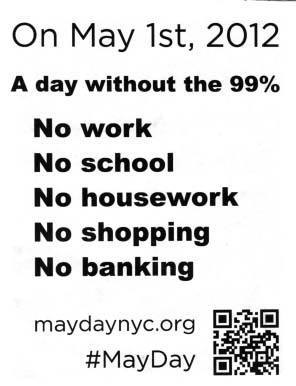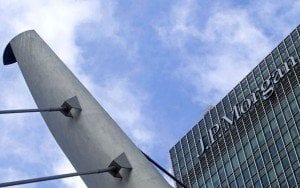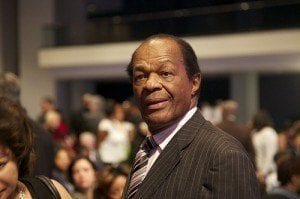
May Day brings global protests
May Day has arrived and laborers are marking it with protests around the world.
May Day is celebrated on May 1 each year and is recognized by many as “International Worker’s Day.” This year many organizations have called for an international day of protest, urging people to skip work or school.
Protesters, along with immigration activists and Occupy movement members, are calling for a day of action to demonstrate for the “1 percent” what the other “99 percent” can do.
This May Day is being marked with plans by Occupy Oakland protesters in California to “occupy” the Golden Gate Bridge in San Francisco. Organized labor protesters in Washington, D.C. plan a similar march to the White House. In New York, plans are to gather in midtown Manhattan at Bryant Park and the neighboring Bank of America tower to picket and protest unjust conditions for laborers worldwide.
“All civilians stand by for GENERAL STRIKE at 08:00. No Work, School, or Shopping. All out in the streets!” stated a text message broadcast from an Occupy Wall Street address late Monday.
This May Day is important as it marks the convergence of numerous protest groups, including Occupy Wall Street and other Occupy groups nationwide, in an effort to convey the drastic effects of the widening gap between rich and poor, owners and laborers- an issue that is reminiscent of the spark that brought May Day to the sacred forefront of protest movements.
Occupy protesters have targeted financial institutions in this country since their beginning following the pro-Democratic revolutions known as the “Arab Spring” last year. Their intentions are to not only bring attention to the apparent disparities between those in power and the laborers who support them but also to bring about change to the financial institutions that play such an integral part in this nation’s economy.
Protesters plan to camp out across the street from the New York Stock Exchange. The Stock Exchange reported no problems shortly after opening Tuesday.
Domestic Workers United outreach coordinator, Joycelyn Gill-Campbell, commented, “We have to show the 1 percent what democracy looks like. The domestic workers take care of their children, their homes, and they’re treated like less than human beings.”
Protests in Chicago include a gathering at Union Park at noon accompanied by a march downtown at 1 p.m.
Chicago is especially relevant to this year’s May Day in that it is the center for protest centering on the NATO summit scheduled for May 20 and 21. The city of Chicago has already made drastic preparations for what is expected to be an immense crowd of protesters flocking to the city.
Chicago also has another important connection to May Day as it was the site of the Haymarket riot in 1886, which is seen as the foundation for May Day and international recognition of laborers. The 1886 incident occurred on May 4 as laborers protested for an eight-hour work day. An unknown assailant threw dynamite into the crowd, killing both police and protesters. Eight anarchists were convicted of conspiracy in the case, four were executed in 1887.
Pete Dutro, 37, a protest organizer from Brooklyn, N.Y., stated of the correlation between this year’s May Day and the 1883 Chicago incident. “The labor conditions were not good back then, people were being exploited and you had a huge disparity in income. And that’s what we’re facing right now.”



















